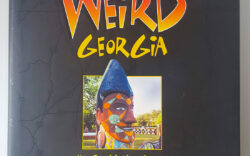It came from outer space! In the early morning of June 30, 1908, people in the remote Tunguska region of Siberia beheld an event of Biblical intensity. A speeding stone from the sky exploded miles above the heavily-forested landscape with a force many times more powerful than the atomic bomb that blasted the Japanese city of Hiroshima in World War II.
“The sky split in two, and high above the forest the whole northern part of the sky appeared to be covered in fire. At that moment I felt a great heat, as if my shirt had caught fire,” one man who witnessed the incident said afterward.
Luckily, no humans were killed during the Tunguska event, but trees were knocked down for hundreds of square miles around the epicenter of the aerial explosion. In his 1980 best-selling book Cosmos, astronomer Carl Sagan wrote that the explosion was caused by a fragment of a comet slamming into Earth’s atmosphere at thousands of miles per hour. Today most scientists say that the cosmic culprit was an asteroid that frightened the sparse population of the Tunguska region in 1908.
The object that exploded over remote Russia was small enough to fit inside a football stadium, but if it had disintegrated over a populated area, the damage could have been the worst natural disaster in history. Writer Isaac Asimov warned that if an object the size of the Tunguska space stone were to fall on New York City, “It would probably knock down every building on the island and large numbers across the rivers on either side, killing several million people within minutes of impact.”
On Feb. 12, 1947 Russia was again in the cosmic crosshairs as a large meteor shattered the morning calm with a thunderous roar as it impacted near Vladivostok. Artist P.J. Medvedev happened to be standing at a window while painting a view of his village when the space stone fell from the sky trailing a fiery tail. The artist painted the scene of the meteor over his sleepy village, and his rendering was used on a Russian commemorative stamp.
Just 12 years ago, Russia was again a magnet for meteors as a space stone estimated to be about 50 feet wide slammed into the atmosphere over the city of Chelyabinsk on Feb. 15, 2013. Again no one was killed by the fireball, but hundreds of people were injured as the meteor’s bludgeoning shock wave shattered windows and rattled buildings near the impact zone. Videos from automobile dashboard cameras and from citizens’ cell phones captured apocalyptic views of the meteor’s sudden appearance and hypersonic fall. Witness Valentina Nikolayeva said the meteor made “an unreal light, which never happens in life. It happens at the end of the world.”
So far, humanity has avoided an “end of the world” asteroid impact like the one that is believed to have doomed the dinosaurs 65 million years ago. That deadly space rock is thought to have been some six miles across and traveling at perhaps 50,000 miles per hour—twice the speed of an Apollo moon ship. It struck with an explosive power many times the combined megatonnage of all Earth’s existing nuclear weapons.
About 50,000 years ago, a meteor made of iron and nickel gouged out a crater 4,000 feet wide in the Arizona desert. Today the crater is a tourist attraction where visitors can see that Mother Nature is our real boss.
In February, the possibility of death from above was worldwide news when scientists revealed that a recently discovered asteroid had a slim chance of hitting Earth in 2032. After refining the data about the object’s orbit, a 2032 impact was ruled out, but astronomers are keeping their eyes on the skies and are constantly looking for threats from space. A robot spacecraft smacked into the surface of an asteroid three years ago to investigate the possibility of deflecting incoming space stones. Results were encouraging, but swatting away an incoming asteroid won’t be as easy as it seems in science fiction novels and movies.
We’ve dodged a bullet from space so far, but there’s one out there with Earth’s name on it.
Like what you just read? Support Flagpole by making a donation today. Every dollar you give helps fund our ongoing mission to provide Athens with quality, independent journalism.










